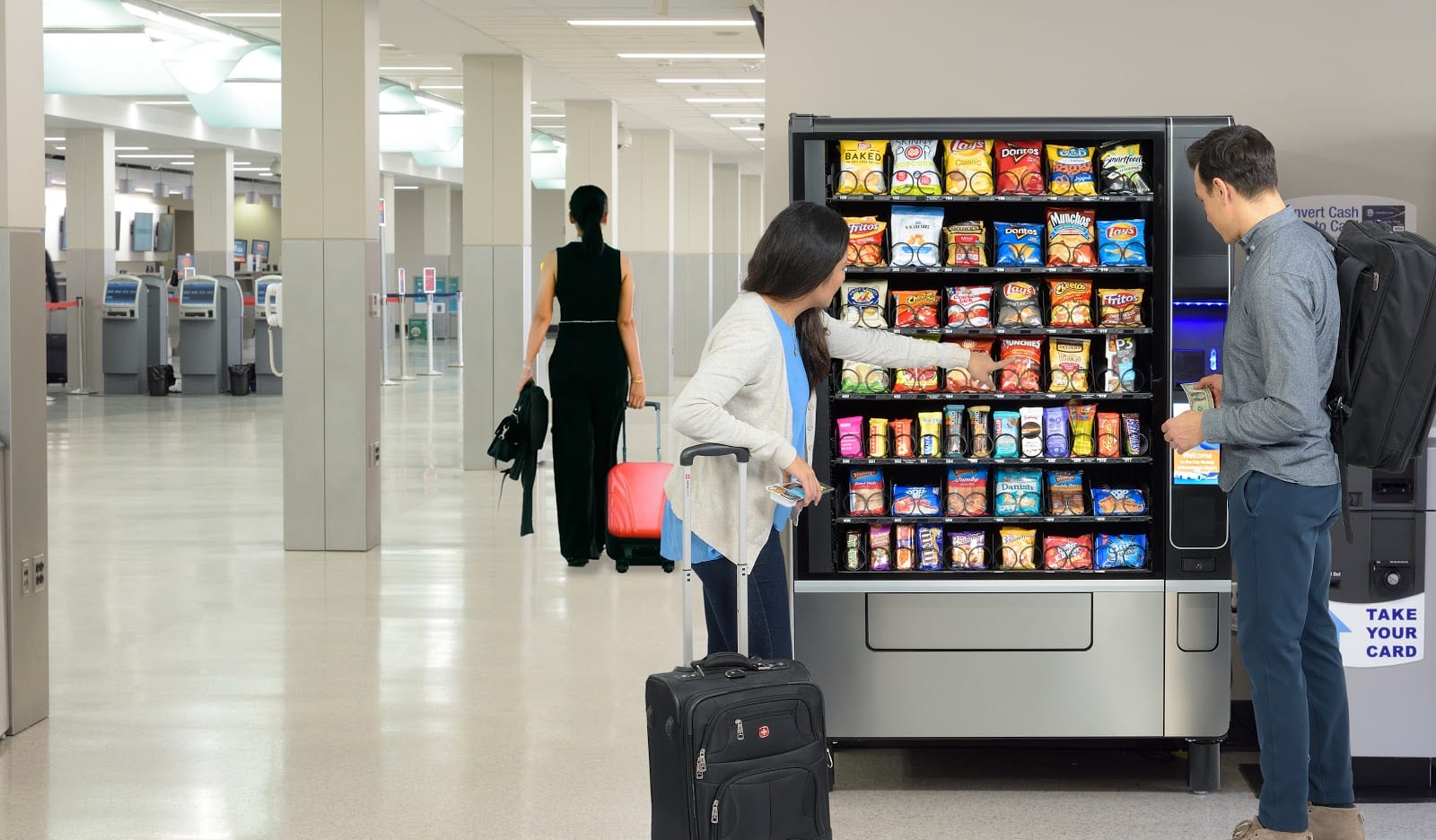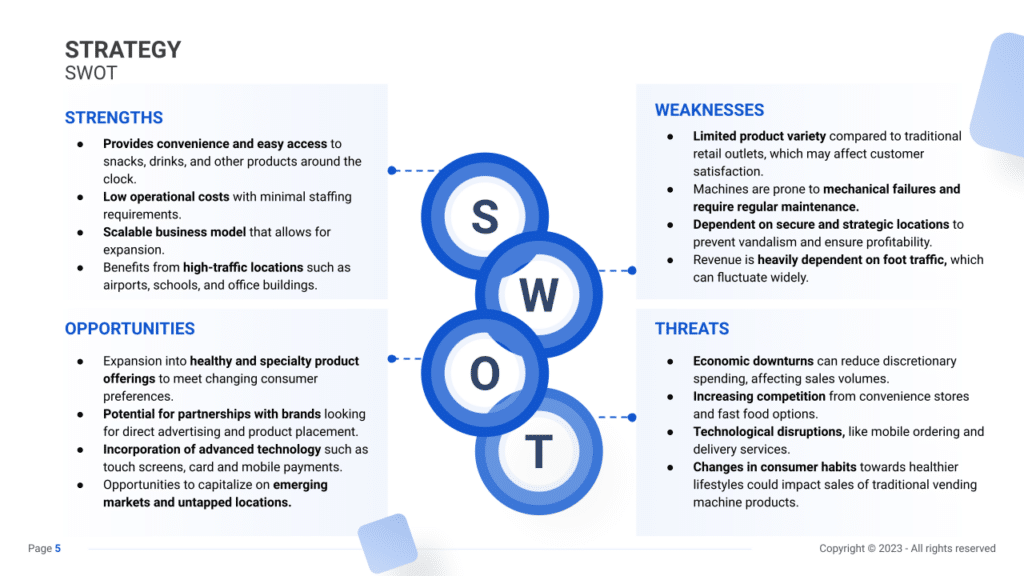SWOT Analysis for a Vending Machine Business (Example)

A SWOT analysis is crucial for developing a business plan for a vending machine business. This analysis, which stands for Strengths, Weaknesses, Opportunities, and Threats, helps in understanding internal and external factors that can impact your business. Strengths and weaknesses are internal to the business, while opportunities and threats are external.
In this article, we will explore various examples of strengths, weaknesses, opportunities, and threats, aiding owners in strategic planning for sustained growth and informed decision-making.

Strengths
Identify the internal strengths that give your vending machine business an edge in the market.
- High-Foot Traffic Locations: Placing vending machines in high-traffic areas like office buildings, schools, or transportation hubs increases sales potential.
- Example: Emphasize the strategic placement of machines in marketing materials to attract potential locations for placement.
- Low Operational Overheads: Compared to traditional retail, vending machines often have lower operational costs, including staffing and rental expenses.
- Example: Highlight the cost-effectiveness of vending machines when pitching to potential business partners or investors.
- 24/7 Accessibility: Offering round-the-clock service provides convenience to customers and can lead to increased sales during off-peak hours.
- Example: Promote the convenience of 24/7 access in marketing campaigns to attract both customers and potential vending locations.
- Product Diversity and Customization: Providing a wide range of products or the ability to customize offerings meets diverse customer preferences.
- Example: Showcase the variety of products available and the option for customized vending solutions in proposals to potential partners.
Weaknesses
Recognize internal weaknesses that could hinder the vending machine business’s growth or profitability.
- Dependency on Machine Reliability: Technical issues or machine malfunctions can impact sales and customer satisfaction.
- Example: Implement regular maintenance schedules and invest in high-quality machines to minimize downtime.
- Limited Product Range: Smaller machines may have constraints on the number or types of products they can offer.
- Example: Research innovative vending technologies or machine designs that allow for increased product variety within a limited space.
- Seasonal or location-based Sales: Certain products may not sell well in specific locations or during particular seasons.
- Example: Conduct market research to adapt product offerings based on location-specific preferences or seasonal demand fluctuations.
- Limited Marketing and Visibility: A lack of marketing initiatives might hinder attracting new customers or securing high-traffic locations.
- Example: Develop marketing strategies that highlight vending machine benefits, uniqueness, and convenience to attract more locations and customers.
Opportunities
Identify external opportunities that the vending machine business can leverage for growth and expansion.
- Health and Wellness Trend: The increasing demand for healthier snack options presents an opportunity to introduce more nutritious products.
- Example: Introduce a selection of healthy snacks and beverages to cater to health-conscious consumers.
- Cashless Payment Integration: Integrating cashless payment systems can attract more customers who prefer digital transactions.
- Example: Upgrade machines with contactless payment options to accommodate changing payment preferences.
- Partnerships and Collaborations: Forming partnerships with businesses or institutions for exclusive vending rights can expand market reach.
- Example: Negotiate agreements with high-traffic locations for exclusive vending access, securing a competitive advantage.
- Expansion into New Markets: Exploring untapped markets such as entertainment venues, parks, or new neighborhoods can open new revenue streams.
- Example: Conduct market research and pilot test new locations to assess viability before expansion.
Threats
Identify external threats that could potentially impact the vending machine business negatively.
- Regulatory Changes: Changes in regulations related to food or vending licenses could impact operations.
- Example: Stay informed about regulatory updates and ensure compliance to avoid disruptions.
- Competition from Retailers: Increased competition from convenience stores or online retailers offering similar products.
- Example: Focus on unique product offerings and emphasize the convenience and accessibility of vending machines as a competitive advantage.
- Changing Consumer Preferences: Shifts in consumer preferences towards healthier or niche products may affect sales.
- Example: Regularly review and update product offerings to align with changing consumer demands.
- Supply Chain Disruptions: Global events or supply chain disruptions might affect product availability and costs.
- Example: Establish alternative supply chains or backup sources to mitigate potential disruptions.





